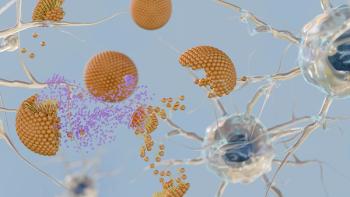
Future Technology Needs for Biomanufacturing: Special Session at IFPAC 2008 Identifies Goals and Gaps
“We need to improve our ability to measure protein variants in real time and understand how to correlate to biological significance,” commented Duncan Low, PhD, scientific executive director at Amgen, in a January 28 presentation at the IFPAC 2008 meeting in Baltimore, Maryland.
“We need to improve our ability to measure protein variants in real time and understand how to correlate to biological significance,” commented Duncan Low, PhD, scientific executive director at Amgen, in a January 28 presentation at the IFPAC 2008 meeting in Baltimore, Maryland. Low’s talk was part of a special session on the future needs for biomanufacturing, co-chaired by members of the US Food and Drug Administration, the National Institutes for Health, the National Institute of Standards and Technology, and Massachusetts Institute of Technology.
The session was designed to initiate a broad discussion of the long-term technology needs for the bioprocessing industry. Recent FDA initiatives have highlighted the need for increased process understanding to better model, control, and optimize biomanufacturing processes; ensure patient safety; reduce manufacturing costs; improve product quality; and increase productivity. Today, however, process understanding is often derived from indirect measures, because there are fundamental scientific barriers to the direct, in-line measurement of key process species and variables.
Keith Webber, PhD, deputy director of the Office of Pharmaceutical Science at the FDA’s Center for Drug Evaluation and Research (CDER), emphasized that quality risk management is at the foundation of such in-line measurement, commonly referred to as process analytical technology (PAT). Thus, he said, we must address three critical questions. First, what risks are associated with glycoforms, aggregates, structural transformations, or impurities? Second, what risks to these aspects of product quality are imposed by the manufacturing process? Third, how can monitoring and control during manufacturing manage or mitigate those risks?
Identifying Critical Roadblocks
Following the presentations by Low and Webber, the audience engaged in an open discussion about the desired state of biomanufacturing 10 years from now. Some of the targets included:
- The ability to perform rapid (<15 min) glycosylation measurements to understand how glycosylation patterns are evolving during a fermentation process and to monitor the impact of variables such as feeds and pH on saccharide patterns;
- Online monitoring of cell metabolism;
- Online protein aggregation detection;
- Advanced active-control feedback systems for monitoring and controlling complex fermentation processes;
- Microsystem arrays for rapidly exploring design space to massively parallel fermentation platforms.
Attendees also discussed one “blue-sky” concept of in-situ, integrated biosensors that would use cell signaling chemistry to monitor fermentation processes, making it possible to have a self-correcting bioreactor that mimics the mechanisms used by higher-order organisms to achieve homeostasis of nutrients and waste. While beyond today’s capabilities, this kind of vision would revolutionize the control of bioreactors, eliminating the need for laboratory analyses and allowing continuous, steady-state processing.
For the near term, the audience emphasized the need for standardized calibration methods for online analytical tools. The industry would also benefit if vendors made available sensor models to allow users to better understand measurement and test sensitivity before running laboratory experiments.
Defining a Path Forward
Overall, participants agreed that the session was productive, but that it was only the starting point. To fully capture the major scientific and technical barriers to improving process understanding and control, input must be obtained from key stakeholders across the value chain and alternative solution paths must be explored further.
Going forward, the authors plan to undertake a variety of actions to further these goals. Key activities will include stimulating discussions at relevant conferences; convening dedicated workshops and working groups focusing on critical barriers; and catalyzing the formation of industry groups or leveraging existing groups. Through this collaborative effort, the team aims to develop a partnership among industry, the federal government, and the academic community to strategically support and execute research to overcome these barriers and work toward advancing fundamental science and the technology infrastructure for the biomanufacturing industry.
Authors
Albert Lee, National Institute of Biomedical Imaging and Bioengineering, NIH; Keith Webber, Center for Drug Evaluation and Research, FDA; Dean Ripple, Thermometry Group, NIST; Michael Tarlov, Process Measurements Division, NIST; and Elizabeth Bruce, Center for Biomedical Innovation, MIT (
Newsletter
Stay at the forefront of biopharmaceutical innovation—subscribe to BioPharm International for expert insights on drug development, manufacturing, compliance, and more.




